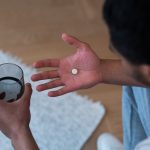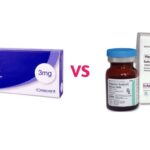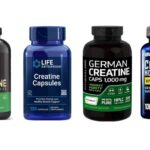What Happens When You Stop Taking A Blood Thinner?

What are blood thinners?
Blood thinners also known as anticoagulants are medications taken orally or intravenously (through a vein) to help prevent blood clots. They’re given to people at a high risk of getting clots, to reduce their chances of developing serious conditions such as strokes and heart attacks.
A blood clot is a seal created by the blood to stop bleeding from wounds. While they’re useful in stopping bleeding, they can block blood vessels and stop blood from flowing to organs such as the brain, heart, or lungs if they form in the wrong place.
Types of Blood Thinners
There are two. The first is called anticoagulants. These keep your blood from clotting or turning into solid clumps of cells that stick together. Most come in pill form though some such as heparin, fondaparinux, dalteparin, and enoxaparin are given as a shot or as an intravenous infusion. Some of the more widely known anticoagulants include:
- Apixaban (Eliquis)
- Dabigatran (Pradaxa)
- Dalteparin (Fragmin)
- Edoxaban (Savaysa)
- Enoxaparin (Lovenox)
- Fondaparinux (Arixtra)
- Heparin (Innohep)
- Rivaroxaban (Xarelto)
- Warfarin (Coumadin, Jantoven)
The second class of blood thinners is called antiplatelets. These target tiny particles in the blood called platelets. They come in pill form and include:
- Aspirin
- Cilostazol
- Clopidogrel (Plavix)
- Dipyridamole (Persantine)
- Eptifibatide (Integrilin)
- Prasugrel (Effient)
- Ticagrelor (Brilinta)
- Tirofiban (Aggrastat)
- Vorapaxar (Zontivity)
How do blood thinners work?
Blood thinners don’t actually make your blood thinner. Nor can they break up clots. But they do keep blood from forming new clots. They can also slow the growth of existing ones.
Some anticoagulants do this by competing with vitamin K from the liver. Your body needs this to make proteins called clotting factors. These help blood cells and platelets (tiny pieces of blood cells) bind together.
Antiplatelets keep platelets from sticking to each other and to the walls of blood vessels. These drugs are weaker than anticoagulants. They’re often prescribed to people at risk for future blood clots, rather than to treat existing ones.
What happens when you stop taking blood thinners?
A lot of things can go wrong when you stop taking blood thinners especially if you are at a high risk of getting clots. A new research suggests that stopping blood-thinning drug treatment can be fatal. According to the study, patients being treated with warfarin run a considerable risk of developing blood clots in the brain if they stop taking the drug.
The researchers reached their conclusion after studying data in several Danish registers, including registers for medicinal product statistics and for causes of death. These contain details about the many Danish patients treated with warfarin over the years, their doses, when they run out of medicine and when they get more, their illnesses, and causes of death.
Statistics over the number of blood clots for every 1,000 patients during and after treatment with warfarin showed a significant increase in the number of blood clots in patients shortly after the patients stopped taking the medicine.
What are the possible side effects of blood thinners?
Blood thinners may cause side effects in some people. Excessive bleeding is the most common reaction. It can occur in a variety of ways, including:
- heavy periods
- bloody or discolored urine or feces
- nosebleeds
- bleeding gums
- prolonged bleeding from a cut
Other side effects can include:
- dizziness
- muscle weakness
- hair loss
- rashes
The presence of blood thinners in your system can increase your risk of internal bleeding after an injury. Go to the hospital right away if you experience any of these side effects after falling or bumping your head — even if you don’t have external bleeding.
Your doctor may tell you to limit your participation in contact sports to reduce the risk of bleeding. However, this doesn’t mean you can’t exercise or live a normal life. Swimming, walking, and jogging are excellent forms of exercise and are safe for most people taking anticoagulants. Discuss with your doctor which types of exercise may be best for you.





